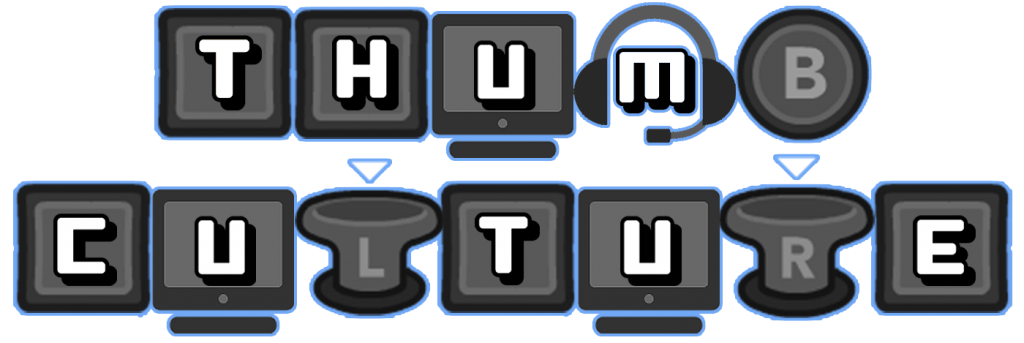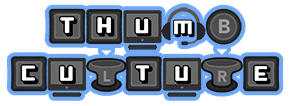
Hazelight Studio, champions of modern co-op, return with another 2-person adventure, Split Fiction. Their last effort, It Takes Two, sold over 20 million copies and won multiple Game of the Year and Best Multiplayer awards. It even managed to snag a Thumb Culture Platinum Award from yours truly. Can Hazelight create a follow-up that matches or exceeds their previous game? There’s only one way to find out.
Writers Blocked
Split Fiction tells the story of 2 struggling writers, Zoe and Mio, who are in the process of getting their first publishing deal with mega-corporation, Rader Publishing. Zoe is a chirpy optimist who writes fantasy stories, while Mio is a reserved pessimistic, sci-fi author. Upon discovering that they must submit themselves to a strange experiment to complete their deal, Mio protests. This ensuing struggle results in Mio and Zoe being stuck together in an alternate reality built on their stories. In an allegory to the current landscape of gen-AI, Rader plans to steal the authors’ ideas for use in a machine that will replace story writers entirely. To escape and save their creativity being syphoned, the women must learn to co-operate and hunt down glitches in the system.
Gameplay
Once you are in control of your characters, the game begins at a pretty relentless pace. There’s an efficient tutorial that introduces the core movement mechanics for the characters, and then you’re thrown into a platforming gauntlet that utilises those skills. This is typical of many of the scenarios in Split Fiction. There are numerous long and challenging sections that can prove to be frustrating, especially for less experienced gamers. It’s worth mentioning there are a lot of accessibility options in the menu that can alter input types, and even make combat easier, which might help some players.

I played with my partner, who is competent, but a fairly inexperienced gamer. We previously played It Takes Two together, which she found to be a lot more approachable and engaging. One of the issues that tripped her up was the need to analyse a situation very quickly, when there’s a lot of visual information, to avoid a death. An early example would be the first fantasy section where you’re being chased by Trolls and have to rapidly climb a tower. This is the first time the game introduces the upward dash and isn’t quick enough at explaining that to the player. Thankfully, the checkpoint system is lenient, so a death won’t usually send you back too far.
The main chapters of the game take place in either a sci-fi or fantasy themed story. Based on an idea from either Mio or Zoe respectively. As we’ve now come to expect from Hazelight, the variation in gameplay mechanics is impressive, with new ideas thrown into the mix in each chapter.
Pretty Fly For A Sci-Fi
Mio’s sci-fi stories generally take place in futuristic, dystopian, space themed settings. Within these stories, there is typically an oppressive force hunting you down, and this leads to a lot of fast-paced chases. You can also expect a lot of mechanical puzzles alongside laser and rocket-filled boss battles. Whilst these chapters don’t have the greatest visual distinctions between them, they contain a lot of brilliant gameplay ideas.

Chapter 2’s Flipped Cityscapes is an example that highlights just how good level design can be. In this subchapter, Mio and Zoe must complete a platforming challenge along a shared stretch of the city, but using perpendicular or opposite gravity. After clearing a few jumps and obstacles, the perspective will rotate, altering the landscape for each player seamlessly. It’s a phenomenal part of the game and really shows off the skill and vision of the developers.
Later, in Chapter 4, the use of coloured force fields and guns works to great effect. In these puzzles and fights, red and blue force fields are used to block interactive or destructible objects. One player is assigned the red weapon, the other blue. A small EMP-projectile can be used to disable colour-coordinated shields, exposing targets for the other player to shoot. This leads to exciting battles and rewarding solutions where timing and aiming are crucial. Small complaints about the lack of explanation in parts aside, these portions, and their boss fights, were very good.
Let Me Be Your Fantasy
There’s slightly more variation between Zoe’s fantasy chapters. We go from nature-centric tree-swinging and Groot-like plant manipulation, to dragon riding and slaying. As with the sci-fi chapters, mechanics are introduced, used in fantastic puzzles and level design, iterated on and then brushed aside for something new and exciting.
A QTE dance off with a 70s disco inspired Monkey King was definitely not on my bingo card when travelling through the high-fantasy setting of Chapter 3. However, it was a curveball that I appreciated and wished we’d seen more of throughout Split Fiction, which has an overall serious tone. The conga line mechanic which takes inspiration from the Snake mobile game was also a really fun inclusion.

In Chapter 5 you get to play with dragons. Again, this is a great example of where the mechanics are iteratively changed as the chapter progresses. Here, you go from carrying the dragon eggs and using them to activate puzzles and gates, to riding on the backs of the now adult dragons and fighting a Kaiju-sized boss battle. The dragons are also indicative as to how the developers intertwine movement, combat, and puzzle abilities seamlessly. For example, the acid-spitting ability of one dragon is used to trigger buttons and switches, melt metal that blocks certain objects, and cause damage to bosses.
A Little More On The Side
Within the main chapters, you can stumble across side-stories; shorter adventures, themed oppositely to the chapter they are found in. Side story interludes provided a great bit of respite, often located after a particularly intense set piece. These shorter scenarios were some of the best bits of Split Fiction, sometimes injecting some fun or wacky premise. Such as being a pig that farts rainbows to jetpack around a farm.
Another great idea explored in one of these side stories was a game show hosted by a GLaDOS-inspired robot. In this players have to pass a bomb between each other whilst navigating a series of dangerous obstacles. It took us a couple of attempts to sync our movements to successfully make it to the end zone, but it was a blast. This Portal reference wasn’t the only time we spotted nods to popular games either, with Donkey Kong and Dark Souls being amongst many others.

My partner found the fantasy side stories to be well-placed palate cleansers when we stumbled across them during the pretty demanding action of the main story. It was definitely apparent the fantasy chapters were preferred over the sci-fi ones!
Graphics & Audio
The scale and depth of the environments cannot be overstated. A lot of times when I’m playing games for reviews, I’ll very easily forget to take screenshots and have to go back to take some. However, I’ve taken dozens of shots during playing this game, and it’s a shame I can’t just litter this article with all of them!
I mentioned Flipped Cityscapes earlier. This portion of the game offers a brilliant example of how well the visuals are delivered. Obviously, first and foremost you should play the game and experienced that part for yourself. But then, watch it back. The way the perspective rotates, pans, and zooms, offering magnificent views of the vibrant neon city beyond, is fascinating.

There are several other moments where the world beyond our characters location is shown, and beautiful vistas are revealed. Equally, the immediate environments are well designed and presented. While we may have struggled a couple of times to understand a solution to a particular puzzle, we were almost always aware of what elements we could use or interact with.
I have to apologise to the sound and audio teams. I didn’t manage to pay much attention to those aspects. Being more engrossed in communication with my partner instead. Discussing what we thought we needed to do, apologising for sending each other to our deaths, or cursing at a particularly difficult bit. Our shared brain cell was dedicated to jumping and dodging rather than listening and enjoying the ambience unfortunately. I just hope these elements were designed with this in mind otherwise I feel bad at not appreciating the work.
Longevity
You’re likely to get between 10 and 15 hours of gameplay from a single play through of Split Fiction. Depending on how well you tackle some of the more tricky sections, it could easily take longer than that. This duration can be double with a second play through. Where co-op partners use the opposite character, so as to experience some mechanics only used by either Mio or Zoe. Aside from that, there isn’t quite the same replay value offered by It Takes Two due to the lack of unlockable mini-games. Which is a shame. Still, it’s hard to argue you’re not getting your money’s worth with Split Fiction. What is offered is a deeply varied gaming experience.

Final Thoughts
There’s no denying the exceptional quality of Split Fiction. It’s easily going to be one of the best games of 2025 and an awards season shoo-in. However I feel that it lacks the wonder and joy found in It Takes Two, which made that game one-in-a-million. The absence of mini-games and a reduction of relaxed exploration is likely intentional to drive home the oppressive nature of the main story. But this definitely removed some joy from the experience for us. I would have also liked to see some more variety in the chapters. Perhaps the side stories could have been the authors’ brief forays into different genres, introducing other elements such as horror or romance.
I’ve not mentioned much about the overarching story itself, the characters, and the overall writing. This is probably the weakest area of the game, but it’s not terrible by any stretch. I remember having similar complaints about characters beginning unlikeable in It Takes Two towards the start of the story, but again it serves to build the same feelings in the players as in the characters.
Ultimately, though, as a co-operative adventure, Split Fiction is another fantastic delivery from Hazelight Studios. One that will provide entertain and fun for friends as well as couples who enjoy gaming together. The developers continue to have huge ambitions when it comes to building these titles, and I’d love to see it continue for many years to come.
Split Fiction earns a Thumb Culture Gold Award.
Disclaimer: A code was received in order to write this review.

YouTube | Facebook | Twitter | Instagram | Discord | Podcast
